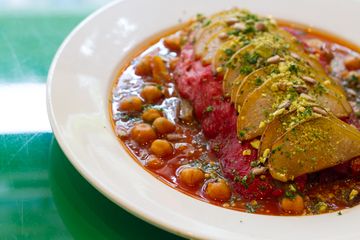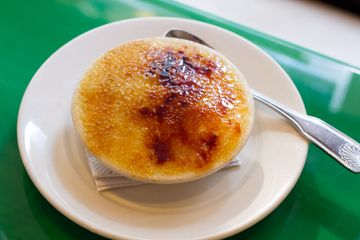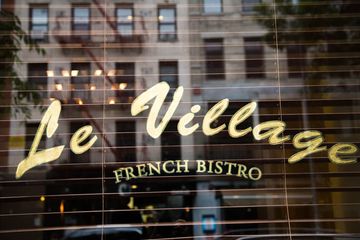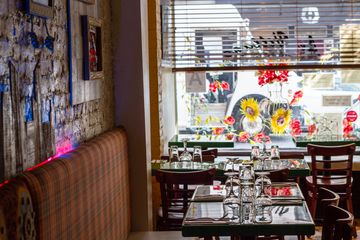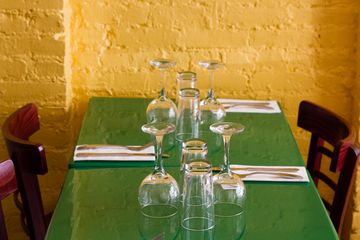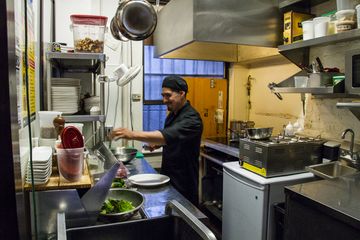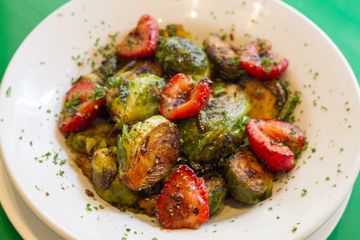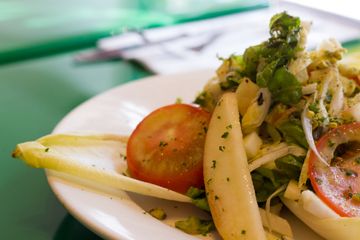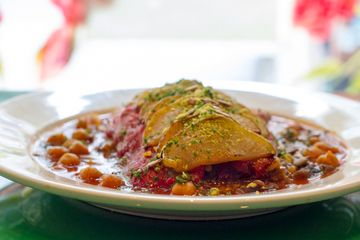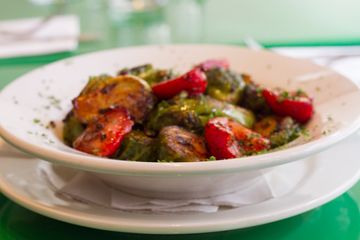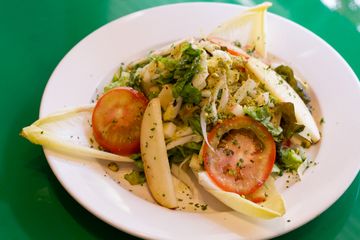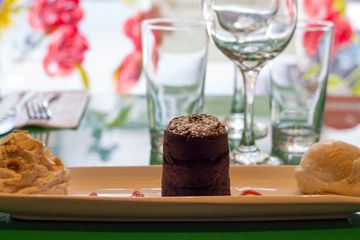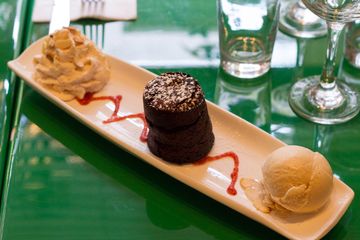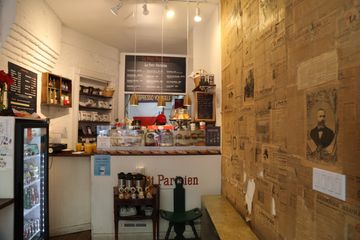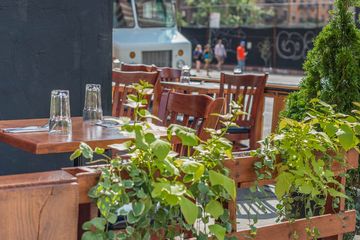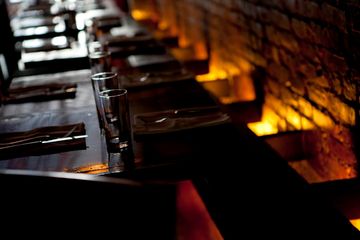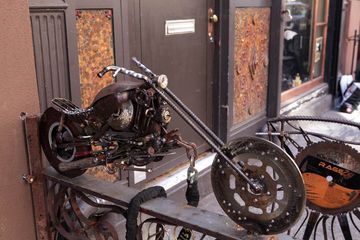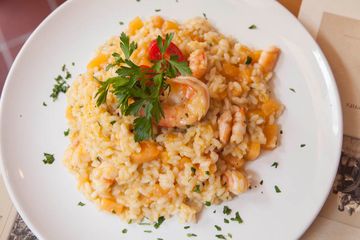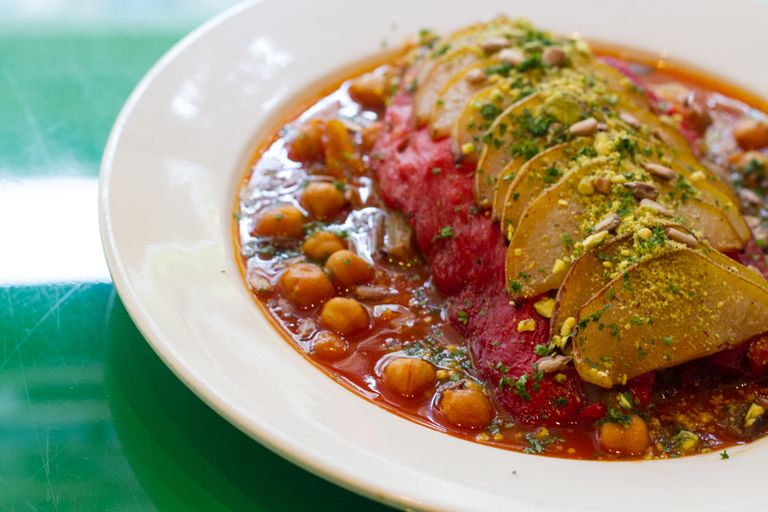
In my experience, French cuisine tends to be heavy on the meat and carbs, but Le Village changes that perception, devoting itself primarily to vegetarian options. The dishes are no less authentic for their vegetarian focus though – throughout my dinner, I was reminded time and time again of meals that I have eaten in France. The menu is annotated so that diners of varying dietary restrictions can be sure to find something to their taste – whether vegetarian, vegan, gluten free, or low carb. In what I consider a true marking of good vegetarian food, there is nothing on the menu that pretends to be meat. Instead, Chef-owner Didier makes the vegetables themselves the star of the show. Nowhere is this more apparent than in his Choux-Fleur Roti, where an entire head of cauliflower is roasted and served at the center of a beautiful plate that also features sweet potatoes and sautéed greens.
Le Village is not Didier’s first foray into the restaurant business. A native of the southwest of France, Didier owned a Bistro in Montmartre, Paris for thirteen years before moving to Manhattan. In 2008, he opened his first restaurant in New York, La Sirène. He followed with Taureau, a fondue restaurant, before opening Table Vert at this 7th Street location in 2013. In 2014, Didier rebranded the restaurant as Le Village. The emerald green tables serve as a colorful reminder of the restaurant’s previous incarnation, which served vegetarian cuisine exclusively. As Le Village, the menu has expanded to include meat options like Coq au Vin and Hanger Steak.
I began my meal at Le Village with the Salade de Saison, and was immediately transported to France. This was no overdressed American-style salad; instead, the ingredients spoke for themselves: endive, sliced apple, green leaf lettuce, and tomato, brightened only by the lightest of lemon dressings. It was the taste of summer in a small french town, far from Manhattan’s sweaty streets.
The next dish that I tried was sautéed brussels sprouts with strawberries – a surprising pairing, but they came together nicely with a balsamic glaze. The Veggie Napoleon also mixed vegetables and fruit to great success – the layered presentation of roasted potato, eggplant, bell pepper, and pear slices made for a hearty main, served on a bed of chickpeas with tomato sauce, and sprinkled with pistachios for a nutty finish.
For dessert, the banana brûlée was a temptation I could not refuse – a marriage between banana bread and crème brûlée, this custard contained whole slices of banana and and vanilla wafers hidden beneath the classic caramelized crust. I was also invited to sample the Fondant au Chocolat, a gluten-free lava cake served with house-made ice cream and whipped cream – positively decadent.
Le Village offers all of the flavor with none of the pretension of most other French restaurants in the city. With a kitchen just a little larger than my own, and a dining room that seats scarcely more than thirty, eating at this East Village gem is akin to being welcomed into a French home for a family dinner. Le Village is BYOB with no corkage fee, so I recommend picking up a bottle on your way there – perhaps at the nearby Wineshop LLC - for a relaxed evening at this charming restaurant.
